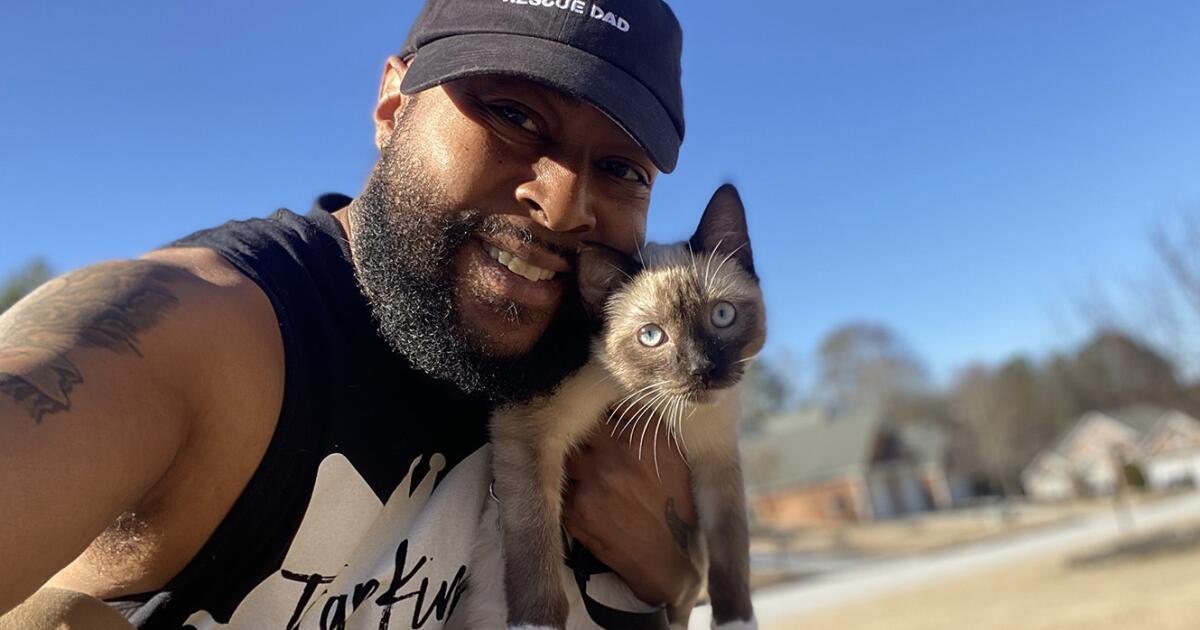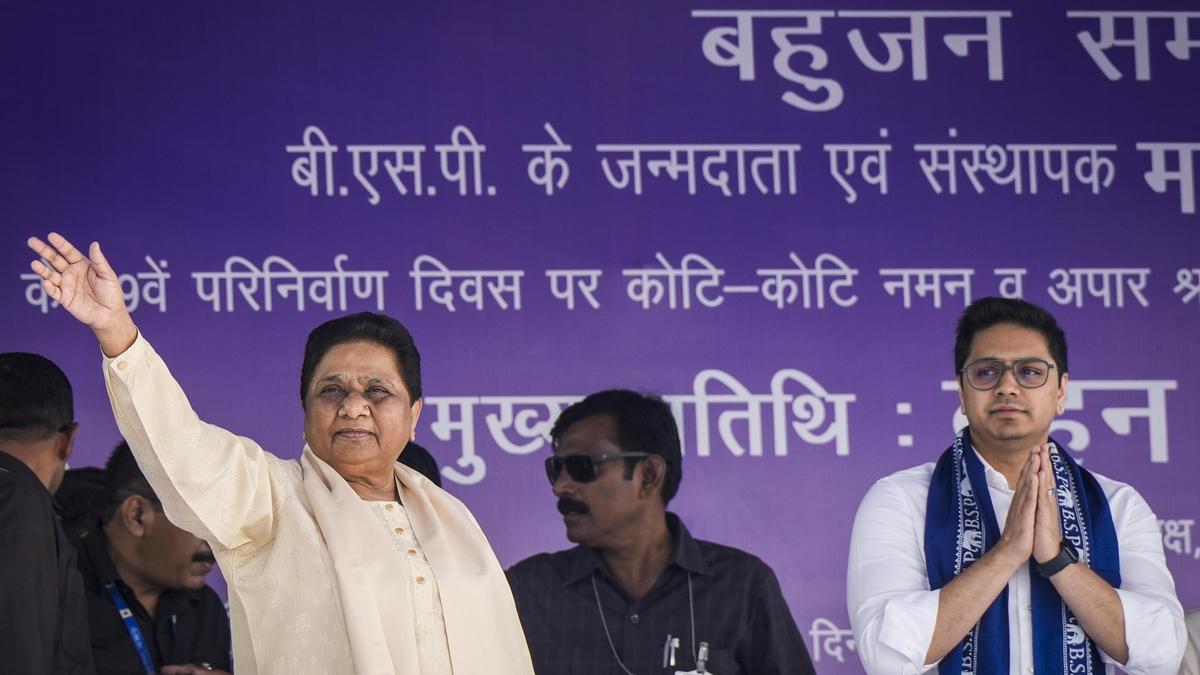Copyright Los Angeles Times

Every movement starts with someone who decides to do things differently. For Sterling Davis—better known as the TrapKing—that moment came between rap tours, when a Craigslist ad for cat volunteers changed the course of his life. What began as a temporary break from the stage became a full-time mission to make cat rescue more inclusive, visible, and understood. Through his Atlanta-based nonprofit TrapKing Humane, Davis has turned TNR (trap, neuter, return) into a national conversation, bridging hip hop culture, animal welfare and community education along the way. I sat down with Sterling to talk about his unlikely path from rapper to rescuer, what it means to make cat rescue “cool,” and how he’s building a movement that’s helping to give support to cats who need it and purpose to people who are seeking it. This interview has been edited and condensed for clarity. Q: You’ve had such an unexpected journey into animal rescue. How did you first get started? Most people know me as a rapper. I’ve been doing music most of my life. So the story really is “from rapper to cat trapper.” I was touring with an artist named Tech N9ne and looking for something to do in between tour dates—something constructive so I wouldn’t just blow money or get into trouble. I saw an ad on Craigslist about helping out with cats. I’ve always loved cats—I had one named Rick James at the time—so I figured I’d volunteer for a month or two. I didn’t know anything about cat rescue or TNR then. I just thought I’d be helping out and hanging with cats. When I interviewed at Lifeline Animal Project in Atlanta, I didn’t do great answering questions, but I was good with the cats in the room. They said, “We’re not used to seeing men, and especially men of color, doing this work. You could make a real difference.” I told them I couldn’t make what I made on tour, but something about it stuck. I ended up staying. Q: What convinced you to make it a permanent shift? It started to feel like it was what I was supposed to do. I was already getting frustrated with the politics of the music industry. They wanted me to rap about jewelry and image, and that wasn’t me. When I started working with cats, I realized I could fill a void in rescue—and that hit me hard. It almost felt like everything I’d done—music, the military—was preparing me for this. I thought, “This is my calling.” I wanted to change the stereotypes about Black men and cats. People always said, “Why do you like cats? Why not dogs?” But I’ve always been eccentric. I figured maybe this was how I could deliver that message. Q: For readers who don’t know, can you explain what TNR is and how you learned about it? When I started at Lifeline, they were mostly dog-focused, but the CEO wanted to expand TNR—trap, neuter, return. It’s where you humanely trap outdoor cats, get them spayed, neutered, and vaccinated, then return them to their colonies. It helps stop overpopulation and disease. At first, I was just scooping litter boxes, but she said, “You’re a cat person and a people person—honestly, most cat people aren’t.” She told me it’s like social work, and she was right. I got trained through Best Friends Animal Society and learned that a big part of TNR is education. You’re talking to HOAs, apartment managers, community members—helping them understand why this work matters. Q: You eventually launched your own organization, TrapKing Humane. How did that start? I stayed with the county for about five years. Over time, people wanted to talk to me directly instead of the rescue. I wanted to focus more on cats and especially underserved communities—getting men and people of color involved. It’s still almost taboo for a Black man to love cats, so I wanted to show up and make that normal. In 2017, I started TrapKing Humane. The name came to me at a conference. “Trap” is so heavily used in hip hop, and I realized I could flip it into something positive. I thought, “I could be the king of trap, neuter, return.” I made a logo—kind of a hood version of Hello Kitty—and went for it. I sold most of what I owned, wrapped a conversion van with the TrapKing logo, and lived out of it while trapping cats and teaching people about TNR. People thought it was sad, but I wasn’t struggling. I liked the minimalist lifestyle, and I was doing something that felt meaningful. Q: That’s serious dedication. How did you make the logistics work—especially with spay and neuter surgeries? At first, I partnered with low-cost spay and neuter clinics that would charge me about $30 per cat. That adds up fast, but people donated and I sold shirts to help cover costs. Once my social media started growing—after Netflix, Drew Barrymore, the Today Show—I began bartering my platform. I’d walk into clinics and say, “If you give me some free surgeries, I’ll shout you out on social.” They’d check and see, “Oh, he’s really on Netflix,” and agree to a few free surgeries. Sometimes five free ones made all the difference when I was pulling up with 30 cats in a night. Q: You’ve grown from one man in a van to a national advocate. How do you balance it all now? At first, it was just me trapping every night. I’m an insomniac, so I’d stay up all night trapping, then set the cats up for surgery in the morning. But I realized I couldn’t do it alone. Now I focus a lot on education—making it look fun, making it cool. I do more speaking engagements and try to meet people where they are. The goal has shifted from just trapping to getting people to work together. There’s a lot of infighting in rescue, so I emphasize unity. Eventually, I want to help influence laws and funding. When I started, I didn’t know Lifeline was one of the first to have a paid TNR position. Most TNR folks still volunteer. There’s no financial support in it. I want to change that. Q: What’s your vision for the future of TrapKing Humane? I want to create a network—a fraternity or sorority of TrapKings and TrapQueens—so others can use my platform to raise awareness and funds. Most rescuers don’t want to be online promoting themselves. They’re boots on the ground. If I can help them by sharing their work, raising funds, and changing how people view cat rescuers, that’s what I want to do. I want people to see them as heroes, not “crazy cat ladies.” Q: For people who aren’t familiar with TNR, what do you wish they understood about its benefits and why it’s so vital? TNR is the humane alternative to euthanasia for stray and feral cats. Without it, cats get picked up and put down because shelters are overwhelmed. With TNR, we trap them, fix them, vaccinate them, and return them. Once they’re fixed, they stop fighting, breeding, and hunting as much because they have food and stability. A managed colony keeps other cats from moving in—it’s called the vacuum effect—and it prevents disease and overpopulation. It helps the whole community. The problem is people still think it’s just “crazy cat ladies.” But a lot of those women people joke about are spending their Social Security checks to fix and feed cats, keeping neighborhoods cleaner and safer. They’re doing real community work. Q: For anyone inspired by your story, how can they get involved? You can visit TrapKingHumane.com to donate or learn more. Even if you can’t donate to me, you can support your local cat rescues. I work with organizations all over the country. Follow me on Instagram—whenever I post a donation link, you’ll also see others. You don’t have to trap cats to help. Share, spread the word, educate someone. That’s how we change things. Q: What keeps you motivated? People thought I lost my mind when I left music to live in a van trapping cats. But I believe the ones people call crazy are usually the ones who do amazing things. I’m just doing what I was meant to do.



